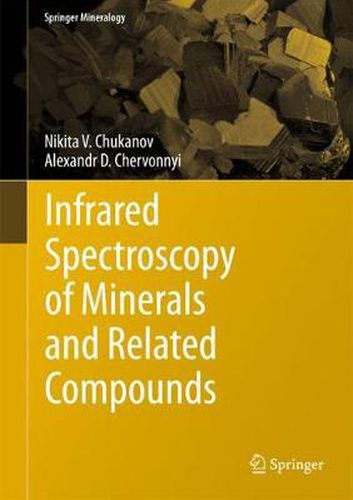Readings Newsletter
Become a Readings Member to make your shopping experience even easier.
Sign in or sign up for free!
You’re not far away from qualifying for FREE standard shipping within Australia
You’ve qualified for FREE standard shipping within Australia
The cart is loading…






This title is printed to order. This book may have been self-published. If so, we cannot guarantee the quality of the content. In the main most books will have gone through the editing process however some may not. We therefore suggest that you be aware of this before ordering this book. If in doubt check either the author or publisher’s details as we are unable to accept any returns unless they are faulty. Please contact us if you have any questions.
This book provides an overview of the application of IR spectroscopy in mineralogical investigations, as well as modern trends in the IR spectroscopy of minerals. It includes the most important methodological aspects; characteristic IR bands of different chemical groups and coordination polyhedra; application of IR spectroscopy to the investigation of the crystal chemistry of amphiboles, phyllosilicates, tourmalines etc.; neutral molecules entrapped by microporous minerals; and analysis of hydrogen in nominally anhydrous minerals. About 1600 IR spectra (illustrations as well as a list of wavenumbers) of minerals and some related compounds are accompanied by detailed descriptions of the standard samples used. Each spectrum provides information about the occurrence, appearance, associated minerals, its empirical formula, and unit-cell parameters. The book also provides insights into sample preparation and/or spectrum registration methods. It includes IR spectra of 1020 minerals that were not covered in the book Infrared spectra of mineral species: Extended library published in 2014 and written by one of the authors. On average, each page provides information on two minerals/compounds. Subsections correspond to different classes of compounds (silicates, phosphates, arsenates, oxides etc.). About 290 new spectra have been obtained, and the remaining 1310 spectra are taken from most reliable literature sources (published over the last 60 years) and are redrawn in a unified style.
$9.00 standard shipping within Australia
FREE standard shipping within Australia for orders over $100.00
Express & International shipping calculated at checkout
This title is printed to order. This book may have been self-published. If so, we cannot guarantee the quality of the content. In the main most books will have gone through the editing process however some may not. We therefore suggest that you be aware of this before ordering this book. If in doubt check either the author or publisher’s details as we are unable to accept any returns unless they are faulty. Please contact us if you have any questions.
This book provides an overview of the application of IR spectroscopy in mineralogical investigations, as well as modern trends in the IR spectroscopy of minerals. It includes the most important methodological aspects; characteristic IR bands of different chemical groups and coordination polyhedra; application of IR spectroscopy to the investigation of the crystal chemistry of amphiboles, phyllosilicates, tourmalines etc.; neutral molecules entrapped by microporous minerals; and analysis of hydrogen in nominally anhydrous minerals. About 1600 IR spectra (illustrations as well as a list of wavenumbers) of minerals and some related compounds are accompanied by detailed descriptions of the standard samples used. Each spectrum provides information about the occurrence, appearance, associated minerals, its empirical formula, and unit-cell parameters. The book also provides insights into sample preparation and/or spectrum registration methods. It includes IR spectra of 1020 minerals that were not covered in the book Infrared spectra of mineral species: Extended library published in 2014 and written by one of the authors. On average, each page provides information on two minerals/compounds. Subsections correspond to different classes of compounds (silicates, phosphates, arsenates, oxides etc.). About 290 new spectra have been obtained, and the remaining 1310 spectra are taken from most reliable literature sources (published over the last 60 years) and are redrawn in a unified style.